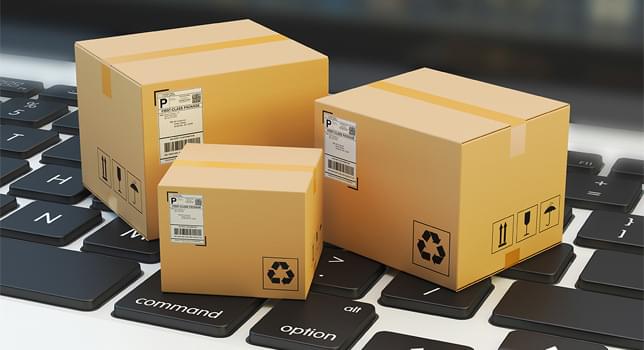Market Report
The Impact of E-commerce on Packaging: Long-term Forecasts to 2029

Sales via e-commerce are redefining the retail landscape across the world, and the role and value chain for packaging sold for online trade. This is presenting new business opportunities for packaging converters and material suppliers – especially in the corrugated sector.
Research from Smithers shows that in 2019 total value of packaging for e-commerce is worth $37.5 billion. The global market is growing at a rate of 14.0% to year-on-year, and will almost double, reaching $63.3 billion in 2023.
In its latest in-depth investigation into this rapidly evolving segment – The Impact of E-commerce on Packaging: Long-term Forecasts to 2029 Smithers identifies the following key challenges for packaging converters, material suppliers, and brand owners.
The materials most frequently used are corrugated board and flexible plastics – two packaging materials that come from two very different company types. Corrugated board currently represents around 80% of the total market by value. This hegemony is under threat however, for example, Amazon has recently moved lightweight flexible plastic mailers from traditional corrugated board boxes. As the largest shipper of packaged goods in North America, this will probably set a trend for the rest of the industry.
There are many opportunities for material suppliers as the e-commerce market is looking for packaging that is lightweight, durable and sustainable. A material producer can add value by guaranteeing the origin of the material and by informing consumers about the processes that made it. Source certificates, such as Forest Stewardship Council (FSC), add value to a board product, just as using 100% recycled plastic gives consumers a new perspective on plastic.
With the emergence of omni-channel retailing, the challenge is to find a packaging solution and material that works well in all channels, as conditions might be very different. New materials will be developed with a sustainable orientation. Reusable packaging in combination with a deposit scheme has been refined by Loop introducing home delivery with refillable packaging, for which material specifications are different.
Producers of plastics or papers that is directly printable will have an advantage as it enables e-commerce sellers to prepare their packaging at the point of dispatch, which is becoming a standard procedure.
Overall e-commerce is positive new for packaging converters. Goods sold online and delivered require more packaging, for repacking and shipment individually in new configurations. Demand is growing for purpose-made, more efficient packaging.
Technology or smart codes also add new possibilities for the packaging converter. Distribution and retailing are becoming digital and packaging is a cornerstone of the process. Sensors can be built in during converting or added to the finished packaging, QR and other codes can be printed on the packaging surface.
The need is huge for purpose-made and functional packaging solutions that work better in the e-commerce supply chain. Right-sized, lightweight and durable packaging is what online retailers need, and demand is growing fast.
E-commerce is a growing channel to market for brand owners that can be developed into a strength when used strategically. The e-commerce supply chain offers new angles for marketing and positioning a brand and its products. A brand is not limited to selling through retailers since it can set up a commercial web page of its own and sell products for home delivery straight to consumers.
Another marketing potential is using sensors and codes attached to packaging to make the distribution transparent to consumers. Communication, where the ordered products are followed in real time, is a great way to start a dialogue with consumers.
The same solutions can also add security. By using codes and sensors, it is possible to track products and, if needed, to trace them. Counterfeiting is a very big problem in the pharma industry and is spreading fast to other industries, like groceries. There are many alternative ways to make it harder for criminals to copy original products, but it is a difficult battle to win, up until now, when digital sensors make it much more difficult to produce fakes. Using blockchain technology makes it even harder, as it is a transparent system and very hard to corrupt.
The major changes, challenges and commercial opportunities that e-commerce will have for the packaging industry are identified and analysed in depth in the new Smithers study.
The Impact of E-commerce on Packaging: Long-term Forecasts to 2029 is available for purchase now.